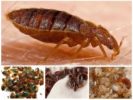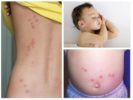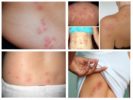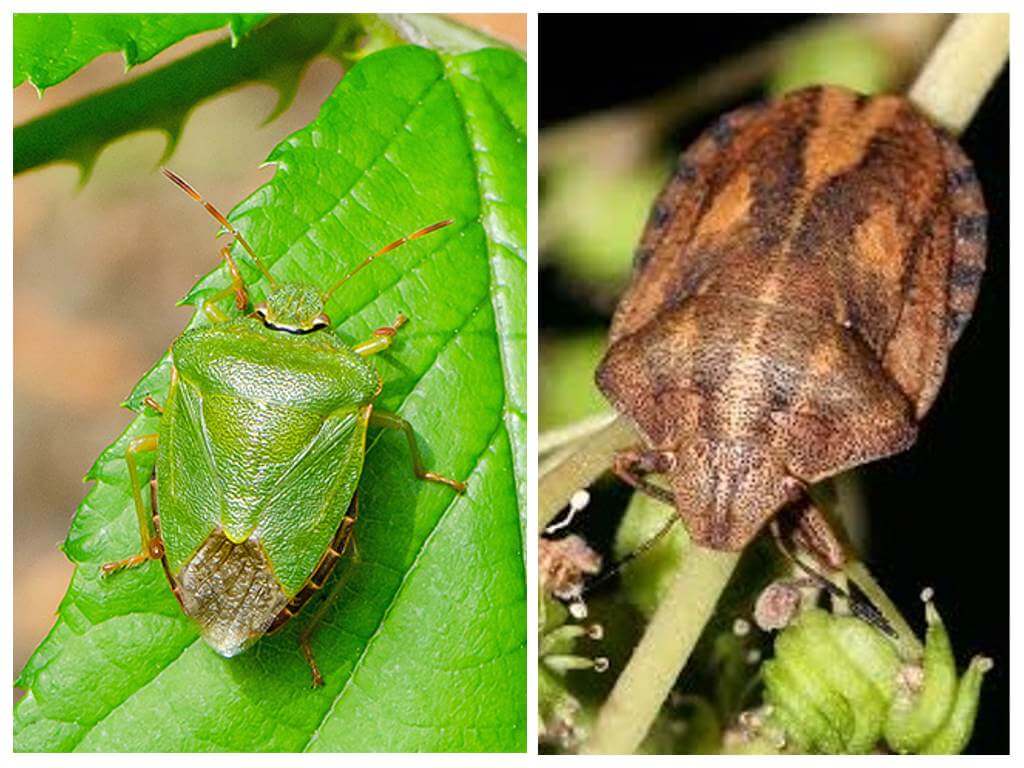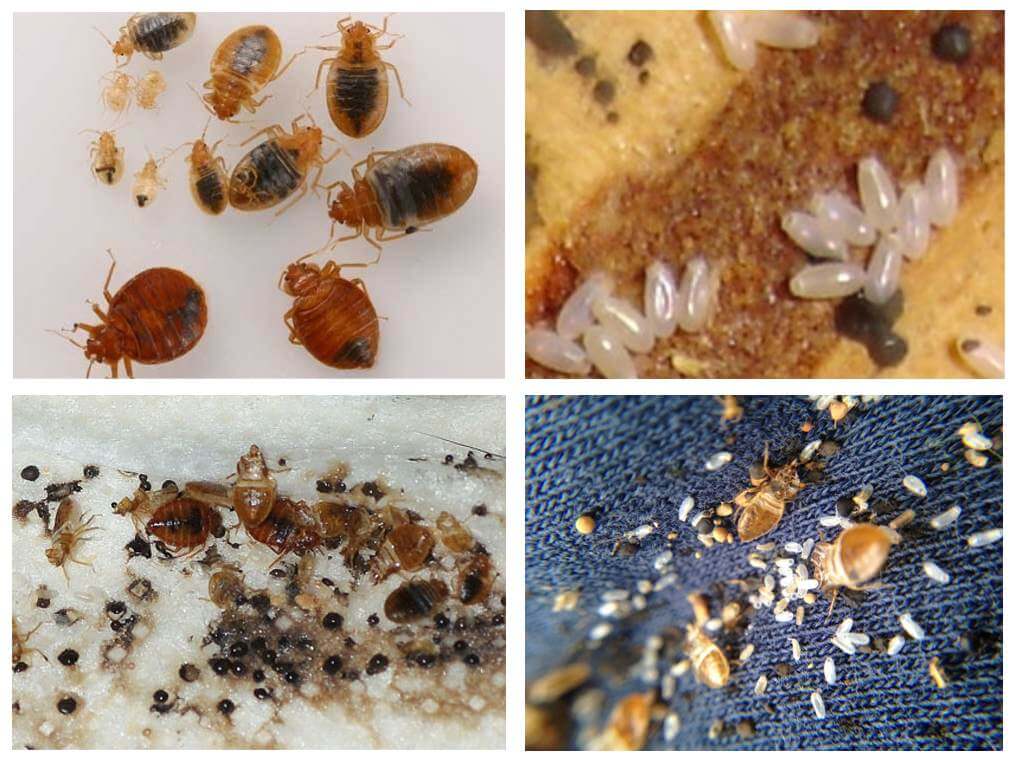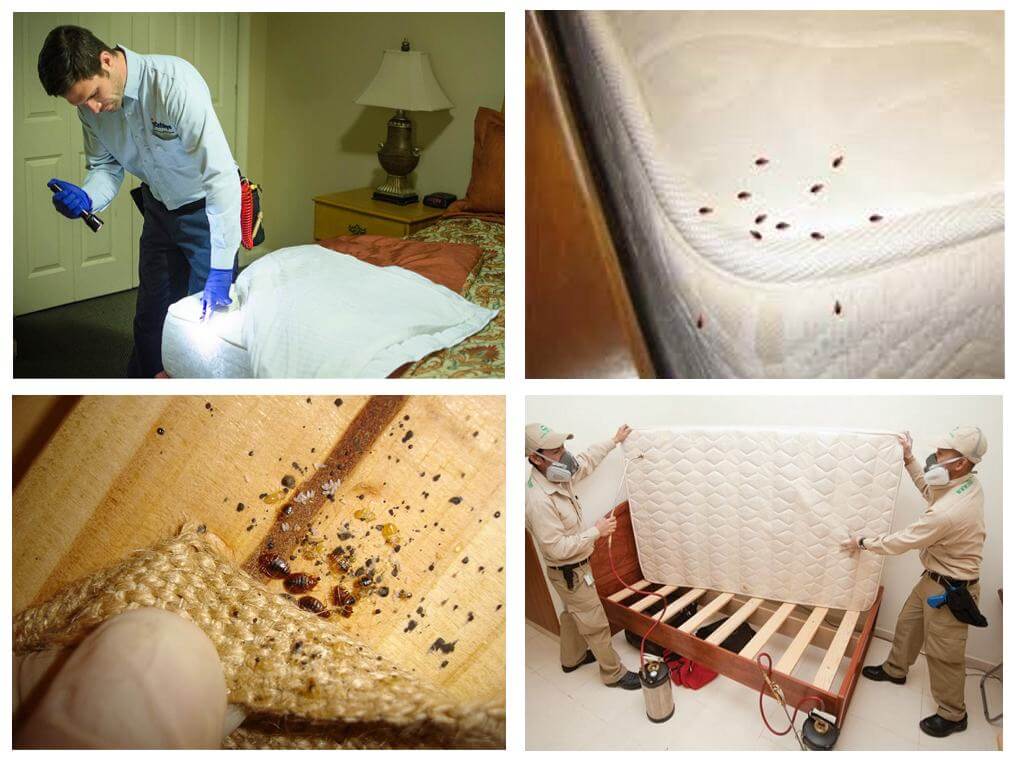- Bed bugs
- Bedbugs bite women and children
- Bedbugs
- Folk remedies for bedbugs
- Bedbug Treatment
Bed bugs - parasitic insects that feed on human blood. They bite at night when a person is sleeping, they live nearby the sleeping place of their victim. And therefore, a modern person needs to know how the bug bites, because in most cases before detection bite marksMany do not even suspect a new neighborhood.
Bite features
The bug has a very flattened body, which protects it well from mechanical influences. After eating, it may increase in sizes 2 times.
The oral apparatus is represented by a pointed proboscis, which is hidden in a special groove located on the body. During the meal, the parasite takes out the proboscis and pierces the victim’s skin with it, trying to get to the capillary.
On a note!
Bed bloodsuckers feel the beat of blood very well and therefore, no worse than an experienced nurse, they find a place for a puncture. Two channels are located in the proboscis: wide for absorption of food and narrow through which they secrete saliva, which has anesthetic effect. Thanks to this design of the oral apparatus, the bug bites painlessly.
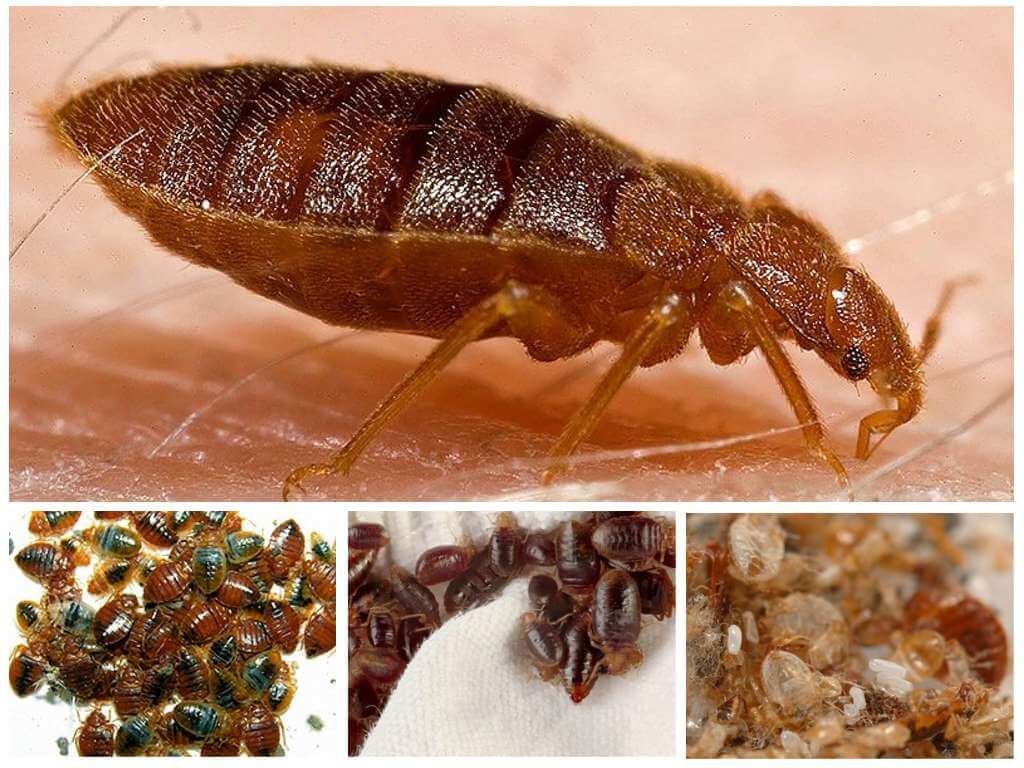
From one puncture site an adult sucks from 1 to 1.5 μl of blood. After that, it moves 2-3 cm along the capillary and the process continues. For one feeding, a home bug can make from 3 to 6 punctures. On the body of the victim, he is 20-25 minutes. Any parasite consumes an amount of blood that is twice its weight in weight. After the meal, a well-fed, enlarged insect is removed to its shelter. The interval between feedings is 7-10 days.
Larvae they bite painfully, as the saliva of young individuals does not contain anesthetic components. They feed more often than adult domestic insects, but the duration of the process is only 2-5 minutes.
On a note!
Bed parasites, although they live collectively, but prefer to eat separately. Therefore, do not reassure yourself that they will bite only once a week. How often bedbugs bite depends on the number of individuals living in the apartment. With a large number of insects, a person will be attacked by bloodsuckers every night.
When the bugs bite
Insects go on a parasitic hunt purely at night and in the early morning hours, when a person’s sleep is especially strong and they can do their “bloody” business with impunity. Insects are not afraid of artificial light sources and therefore the included light will not prevent them from biting their prey. Parasites have a well-developed sense of smell and find their “food base" by the smell of carbon dioxide emitted by humans during sleep.
On a note!
Biting a person in the daytime is unusual for bedbugs. If insects began to bite in the afternoon, then the room is heavily infected with these blood-sucking individuals. Another reason that can cause a bug to bite during the daylight hours is a long hunger, which makes them especially aggressive.
For a comfortable stay, the bug should eat at least once every 10 days.Long hunger in the absence of food sources, that is, a person, can cause him to migrate. Under favorable conditions, a hungry home parasite falls into suspended animation and can be in this state for about 12 months.
Whom the bugs bite
Bed bugs can not be called finicky to food. They with equal zeal are ready to bite clean people, and those who neglect hygiene and prefer the “natural” body odor. Blood type, gender, age of the victim are not a determining factor in how the bugs bite.
It is widely believed that bedbugs do not bite all people, give preference to children and women, as they have thin skin and close capillaries. In part, this statement is true, which does not mean that parasites can not bite men. It's just that representatives of the stronger sex have less sensitivity to insect bites, and the pain threshold is higher. Very often men do not notice that they are bitten.
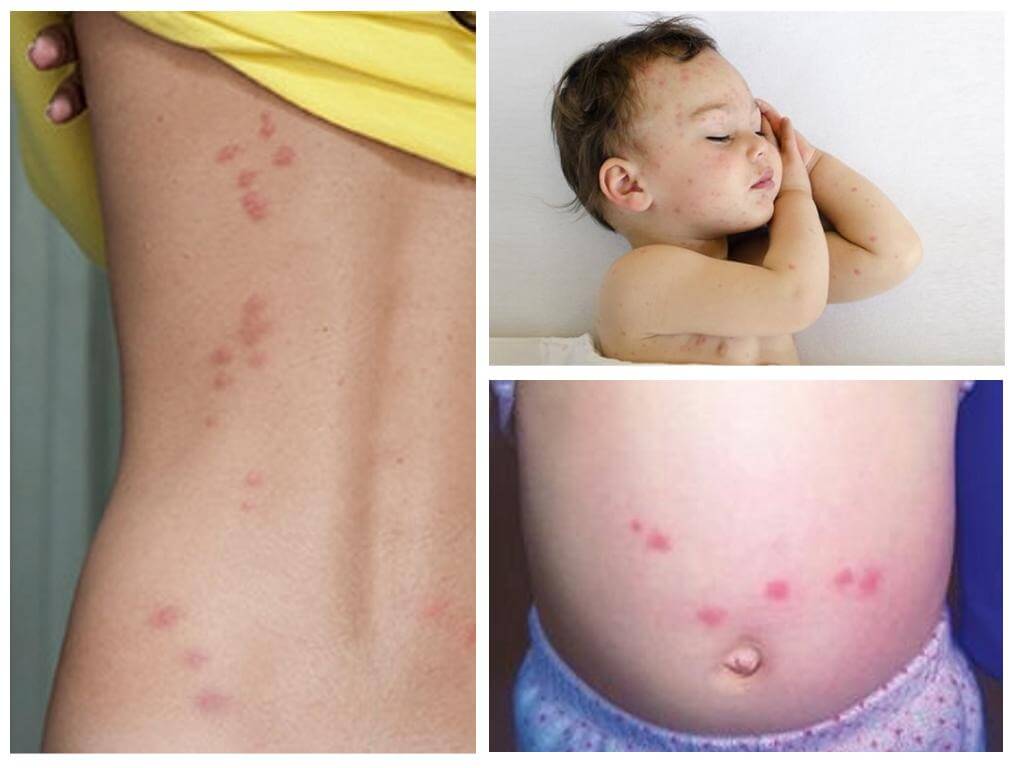
Home bugs try to bite open areas of the body. Favorite places include face, neck, arms, back, legs. Clothing does not present any special obstacles for parasites. They pierce thin cotton products with their proboscis, and they simply climb under clothing from thicker fabrics.
The skin of dogs, cats for bedbugs is too thick, so the insect fails to bite pets. Of certain interest to them are rodents and birds.
Symptoms of bug bites
Traces of parasite bites are often confused with allergic reactions of a person or blamed for other insects. Determine that they bit the bugs by the following signs:
- The bite site is a swollen spot of red color with a cone located in the center.
- Severe itching, burning.
- A distinctive symptom is the linear arrangement of the tracks, the so-called paths, which have several punctures.
- With a careful examination in the wound, you can see the puncture itself, which the bug left while proboscis was immersed in the skin.
In all people, the reaction to bug bites is different. Men are less sensitive to them, young children react most acutely. Traces of bites in a child are pronounced: strongly swollen large-sized spots of bright red color. In the photographs of bitten children and adults, the characteristic signs are clearly visible and how the home bugs bite.
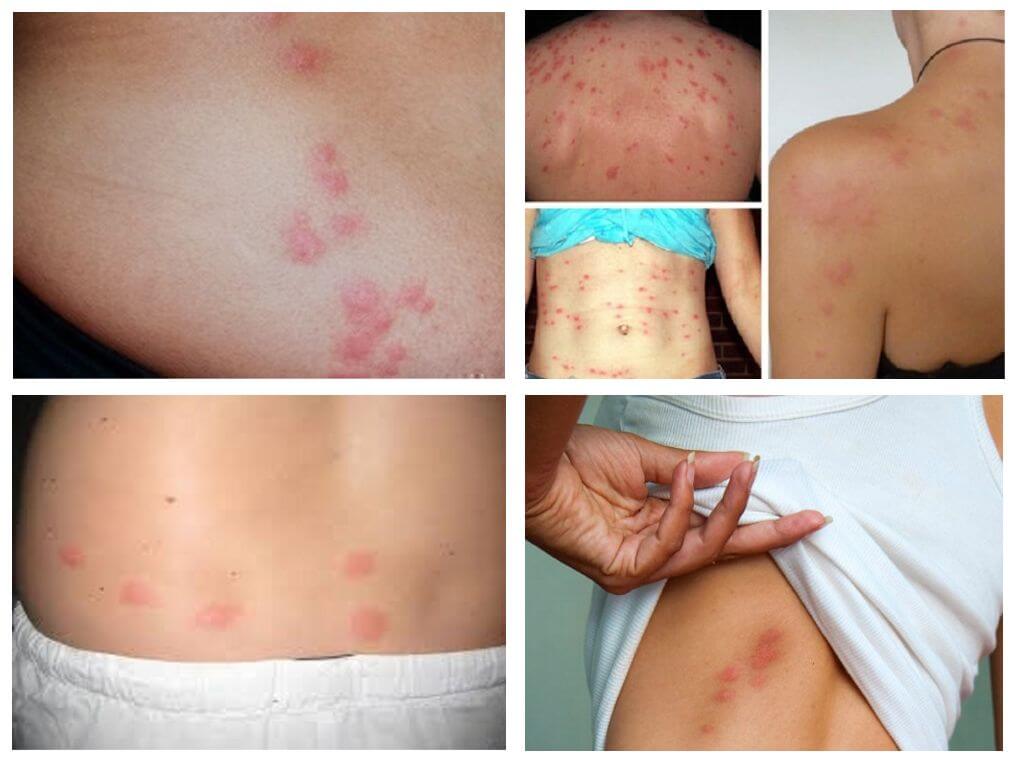
What are dangerous parasite bites?
There are still disputes in the medical community, what are the bugs dangerous. Home bugs are not carriers of infectious diseases, hepatitis, HIV. In isolated cases, bites of bloodsuckers can provoke Quincke's edema or anaphylactic shock in a person.
Possible consequences of bites:
- allergic reactions;
- persistent itching;
- temperature rise;
- disturbances in the work of the respiratory system;
- headache, weakness;
- fatigue, sleep disturbance.
The fact that insects bite causes not so much physical suffering as psychological. Many people are afraid to be in an apartment with parasites, let alone sleep in their surroundings. The big problem is that getting rid of bugs - A laborious process and it is very difficult to get them out.
How to treat bites
In the absence of allergic manifestations in humans, bite symptoms disappear after 2-3 days. They do not need special treatment and treatment. To relieve itching and prevent infection through wounds, it is recommended to treat the wound with warm water and alcohol. You can treat the affected area with infusions of herbs, tea tree oil, fir or sea buckthorn, ointments for bites: pharmacy drugs that have an antiseptic effect, or home-made remedies. Do not comb damaged areas.

Important!
With the appearance of purulent discharge, mucus from the wound, prolonged healing of the affected areas of the skin, you should contact a medical institution.
What to do if they bite bugs
The process of removing parasites may stretch for several months due to an improperly selected pest elimination strategy, lack of awareness of ways to fight with them and inefficiencies.
While planned destruction tactics to deter bugs and reduce the likelihood of their bites, it is necessary to take the following measures:
- Vacuum the mattresses of beds, upholstered furniture, crevices, baseboards. If possible, move the interior items and check the space under them for bugs.
- Steam generator sleeping places. An iron can also be used for this. If the upholstery fabric withstands high temperatures, it is commonplace to stroke it with a dry sole of the iron. Above 50 ° Celsius bugs dieincluding larvae and the eggs.
- Wash all bedding at high temperature and iron after drying with a hot iron.
- If bugs are found in a children's mattress, throw it away without regret.
- Parasites are sensitive to odors. Ledum decoction, herbarium of wormwood, tansy scare them away for a short time and help to spend a quiet night. Bed bugs quickly get used to smells, so aromas must be changed.
- To scare away bloodsuckers, drop 2-3 drops of cedar oil or other essential oil on the night light.
Preventative measures
The reasons for the appearance of bedbugs lots of. They are move from neighboring apartments, can get into the house with the purchased furniture, regardless of whether it is antique or new. Grab a couple of individuals and bring home to a person is very easy from travel. Hotel rooms, dormitories are potential habitats for bloodsuckers.
Considering features of breeding bugs, it is enough to penetrate into the house of only one fertilized female, so that after 3-4 months the population is estimated at hundreds of individuals. Under favorable conditions and good nutrition, the female can lay up to 5 eggs per day. After 4-5, a larva hatches from the egg, and after 30-40 days it becomes an adult full-fledged individual.
To reduce the chances of penetration of uninvited guests, travelers are advised to carefully examine the hotel rooms. Brown bloody spots on mattresses, furniture can signal the presence of bedbugs. Having discovered alarming symptoms, not to mention the fact that the bugs began to bite at night, if possible, do not take things out of their suitcases and keep them closed.
Residents of apartment buildings need to periodically handle the ventilation openings, door and window openings with preventive drugs, and seal the skirting boards. Avoid high humidity and ventilate the room, even in severe frost. Periodically do wet cleaning in hard-to-reach places with chemicals.
